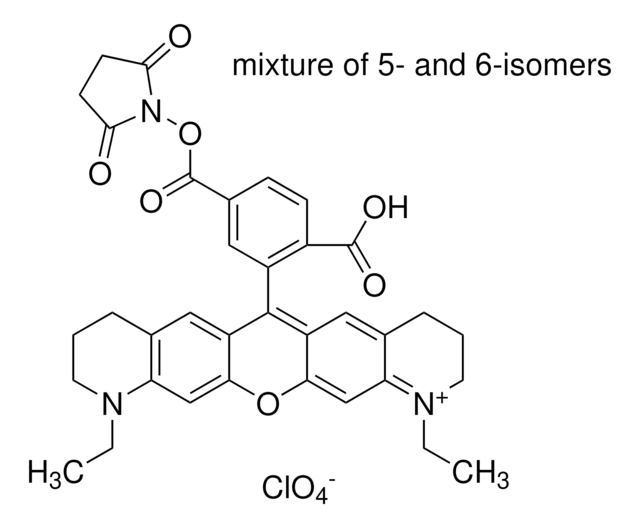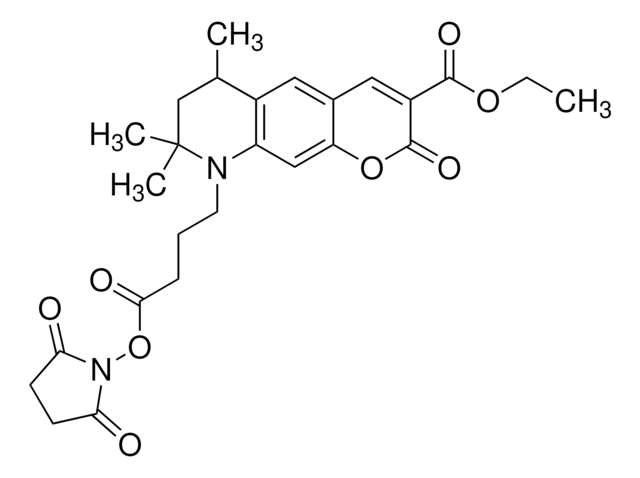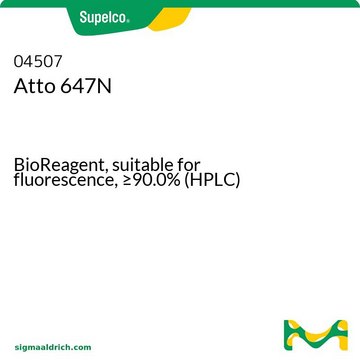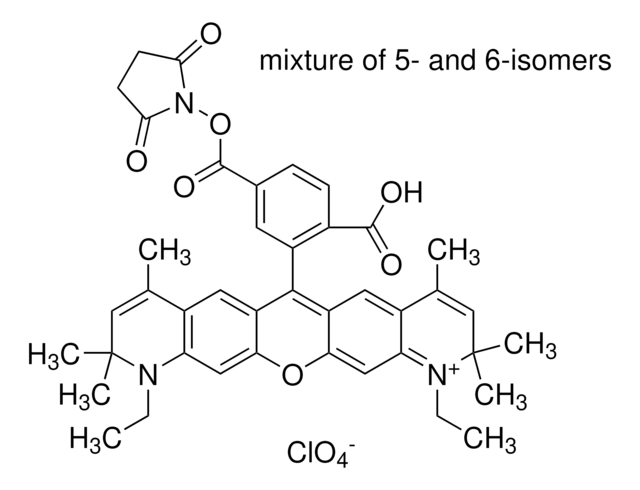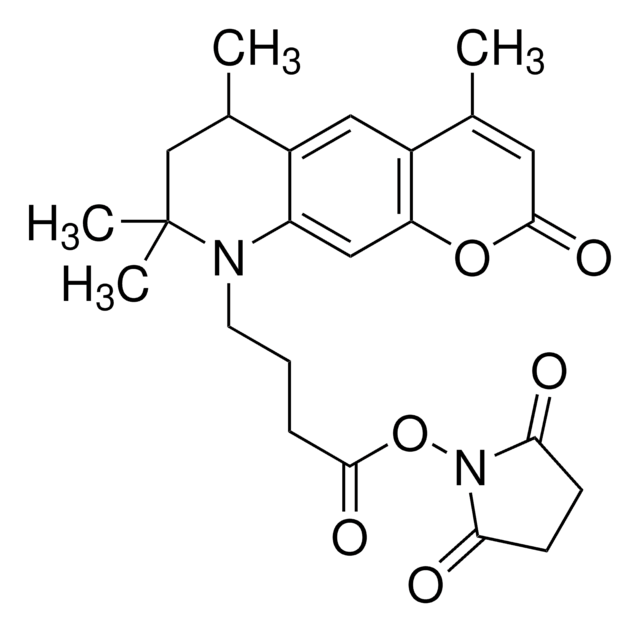41698
Atto 488 NHS ester
BioReagent, suitable for fluorescence, ≥90% (HPLC)
Sinônimo(s):
Atto 488
Faça loginpara ver os preços organizacionais e de contrato
About This Item
Código UNSPSC:
12352108
NACRES:
NA.32
Produtos recomendados
linha de produto
BioReagent
Ensaio
≥90% (HPLC)
≥90% (degree of coupling)
fabricante/nome comercial
ATTO-TEC GmbH
λ
in methanol: water (1:1) (with 0.1% perchloric acid)
Absorção UV
λ: 501-507 nm Amax
adequação
suitable for fluorescence
temperatura de armazenamento
−20°C
Categorias relacionadas
Descrição geral
Atto 488 NHS ester is a hydrophilic fluorescent label with high water solubility. The fluorescence activity is excited efficiently at the 480-515nm range. A suitable excitation source for Atto 488 is the 488 nm line of the Argon-Ion laser.
Aplicação
Atto 488 NHS ester is highly suitable for single-molecule detection applications and high-resolution microscopy such as PALM, dSTORM, and STED. In addition, the dye is used in flow cytometry (FACS) and fluorescence in-situ hybridization (FISH) methods.
Características e benefícios
Characteristic features of the Atto 488 NHS ester are:
- Strong Absorption.
- High Fluorescence quantum yield.
- High Photostability.
- Excellent water solubility.
Informações legais
This product is for Research use only. In case of intended commercialization, please contact the IP-holder (ATTO-TEC GmbH, Germany) for licensing.
produto relacionado
Nº do produto
Descrição
Preços
Código de classe de armazenamento
11 - Combustible Solids
Classe de risco de água (WGK)
WGK 3
Equipamento de proteção individual
Eyeshields, Gloves, type N95 (US)
Escolha uma das versões mais recentes:
Já possui este produto?
Encontre a documentação dos produtos que você adquiriu recentemente na biblioteca de documentos.
Os clientes também visualizaram
Analysis of fluorescent nanostructures in biological systems by means of spectral position determination microscopy (SPDM).
Muller, P., et al. et al.
Current Microscopy Contributions to Advances in Science and Technology, 1, 3-12 (2012)
Qian Peter Su et al.
Proceedings of the National Academy of Sciences of the United States of America, 117(26), 15036-15046 (2020-06-17)
Mammalian DNA replication is initiated at numerous replication origins, which are clustered into thousands of replication domains (RDs) across the genome. However, it remains unclear whether the replication origins within each RD are activated stochastically or preferentially near certain chromatin
Switching modulation for protein labeling with activatable fluorescent probes.
Kalyan K Sadhu et al.
Chembiochem : a European journal of chemical biology, 12(9), 1299-1308 (2011-06-02)
Christiane Iserman et al.
Molecular cell, 80(6), 1078-1091 (2020-12-09)
We report that the SARS-CoV-2 nucleocapsid protein (N-protein) undergoes liquid-liquid phase separation (LLPS) with viral RNA. N-protein condenses with specific RNA genomic elements under physiological buffer conditions and condensation is enhanced at human body temperatures (33°C and 37°C) and reduced
Gražvydas Lukinavičius et al.
Current opinion in chemical biology, 15(6), 768-774 (2011-11-15)
Numerous synthetic fluorophores have been developed that can switch their spectroscopic properties upon interaction with other molecules or by irradiation with light. In recent years, protein-labeling techniques have been introduced that permit the specific attachment of such molecules to proteins
Artigos
Fluorescent Labeling of Peptides
Nossa equipe de cientistas tem experiência em todas as áreas de pesquisa, incluindo Life Sciences, ciência de materiais, síntese química, cromatografia, química analítica e muitas outras.
Entre em contato com a assistência técnica
